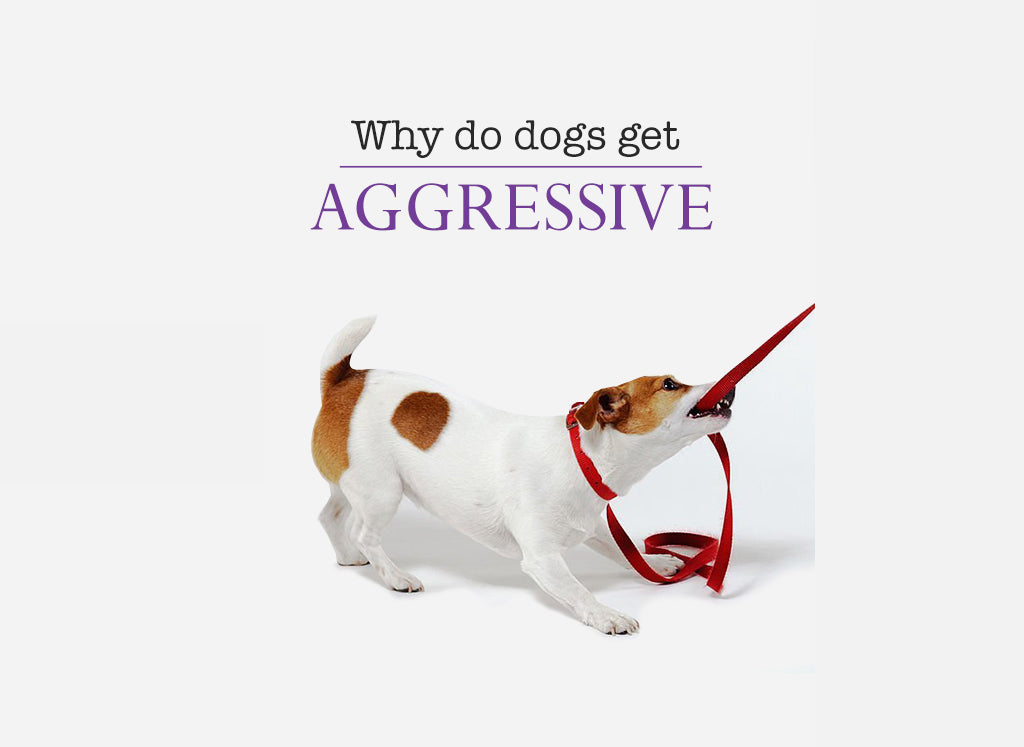
Why & How Dog Is Aggressive & Stop

If your dog regularly growls, snaps, or bites, you might have a behavioral problem of aggression on your hands.
Aggression is one of the top reasons dog owners seek the help of a professional dog trainer or animal behaviorist. And it's not just larger dogs and so-called "dangerous breeds" that are prone to aggression; any breed is capable of becoming aggressive under the right circumstances. Although aggression can't be cured overnight, there are steps you can take to curb aggressive behavior and help your dog remain calm.
Why Do Dogs Behave Aggressively?
Aggressive behavior in a dog refers to any behavior connected with an attack or an impending attack. This includes becoming still and rigid, growling, snarling, baring teeth, lunging, and nipping or biting.
Your first step toward stopping this behavior is to figure out what is causing your dog's aggression. Some dogs growl as someone approaches them while they're eating or chewing a bone, for instance. Others react aggressively toward children or strangers.
The aggression doesn't have to be directed toward a person either. Some dogs become aggressive around other animals, only specific animals (cats but not other dogs), or toward inanimate objects, such as wheels on vehicles or yard equipment.
The key thing to keep in mind is that you can't come up with a plan to modify your dog's behavior until you know the reason behind it. The most common types of dog aggression include:
Territorial aggression: The dog defends its space or your home from what it deems to be an intruder.
Protective aggression: The dog protects members of its pack against another animal or a person. Mother dogs are also extremely protective of their puppies and may become hostile toward anyone who goes near them.
Possessive aggression: The dog protects food, chew toys, bones, or another object of value to it. This is sometimes called resource guarding.
Fear aggression: The dog is fearful and tries to retreat in a scary situation, but then attacks when cornered.
Defensive aggression: Similar to fear aggression—the dog attacks in defense of something rather than trying to retreat first. These dogs have generally given other, more subtle, indications that they want to be left alone before biting, such as turning their head away.
Social aggression: The dog reacts aggressively to other dogs in social situations. Dogs that are not socialized properly with other dogs and people may also exhibit aggression.
Frustration-elicited aggression: The dog behaves aggressively when it's restricted on a leash or in a fenced yard. When the dog becomes stimulated and can not act on that stimulation, it may act out. Sometimes a dog may become overly excited, such as before a walk, and nip its handler.
Redirected aggression: The dog might become aggressive toward a person who attempts to break up a dog fight. It may also happen when the dog can't reach the target of its hostility, such as a neighboring dog on the other side of a fence.
Pain-elicited aggression: The dog shows aggression when it's injured or in pain.
Sex-related aggression: Two male dogs or two female dogs become aggressive when vying for the attention of a mate. This applies to intact animals and can be avoided by spaying and neutering dogs.
Predatory aggression: The dog behaves aggressively without much warning when exhibiting predatory behavior, such as when chasing wildlife. This instinct may become a serious danger when a child is playing chase with the dog. It may start out as an innocent game, but dogs with predatory aggression may quickly turn on and possibly bite the child.
Next Steps
Make a note of when your dog becomes aggressive and the circumstances surrounding the behavior. This will play an important part in determining your next step. It is essential to deal with the underlying cause of the aggression. The behavior is just a symptom of an underlying problem. There are a number of ways you can manage the hostility and help your dog remain calm. It will take time, consistency, and possibly the help of a professional.
Call in a Professional
If your vet has ruled out a medical problem, it's time to call in a professional dog trainer or animal behaviorist. Because aggression is such a serious problem, you shouldn't attempt to fix it on your own. A professional can help you figure out what's causing your dog's aggression and create a plan to manage it.
Consider Medication
In some instances, training alone is not enough. Dogs that are aggressive may also need medication to help manage the problem. It's important to understand that a dog experiencing fear, stress, or anxiety is incapable of learning new things. Think of medication as a tool to help your dog overcome this fear. Many dogs will only need medication temporarily. Talk to your veterinarian about your options.
Handle Unavoidable Situations
Finally, you need to consider whether your lifestyle allows you to stick with a plan. For instance, if you have a dog that acts aggressively toward children and you have kids, it's nearly impossible to avoid the situation that brings out the aggression. In this case, the best option for you and your dog may be finding it a new home with adults only.




